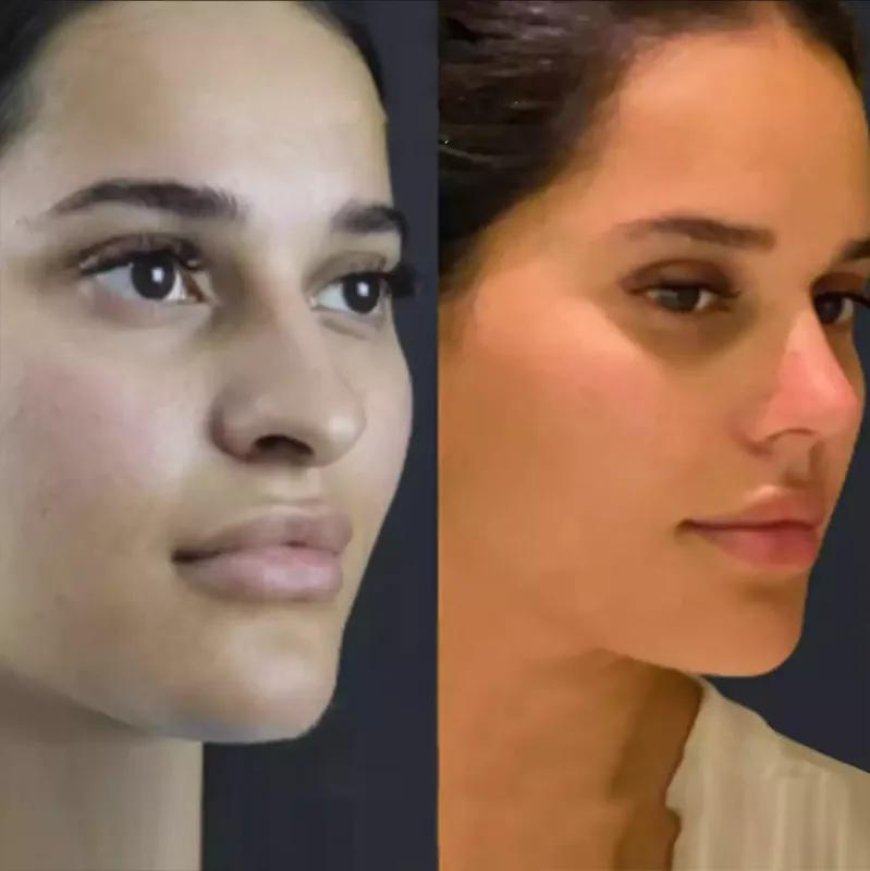How to Deal with Swelling and Bruising After Rhinoplasty
rhinoplasty in dubai,rhinoplasty cost in dubai,best plastic surgeons in dubai

Rhinoplasty, or nose surgery, is a popular cosmetic procedure that can significantly enhance the appearance and functionality of your nose. Whether you're considering rhinoplasty in Dubai for aesthetic reasons or to improve nasal function, it's essential to be aware of the recovery process. Swelling and bruising are common side effects after rhinoplasty, and knowing how to manage them can help ensure a smoother and more comfortable recovery. In this blog, we'll discuss effective ways to deal with swelling and bruising post-rhinoplasty, covering different types of rhinoplasty, including male rhinoplasty, ethnic rhinoplasty, revision rhinoplasty, Asian rhinoplasty, and septoplasty.
Understanding Swelling and Bruising After Rhinoplasty
Swelling and bruising are natural responses of the body to surgical intervention. After rhinoplasty, the delicate tissues in and around the nose are disrupted, leading to inflammation and discoloration. The extent of swelling and bruising can vary depending on several factors, including the type of rhinoplasty performed, the patient’s skin type, and the complexity of the procedure.
-
Rhinoplasty Nose Surgery: This standard procedure involves reshaping the nasal bones and cartilage to achieve the desired aesthetic outcome. Swelling and bruising are expected, especially around the nose and under the eyes.
-
Male Rhinoplasty: In male rhinoplasty, the goal is to enhance the nose's appearance while maintaining a masculine look. Swelling and bruising can be more pronounced in men due to thicker skin and stronger nasal structures.
-
Ethnic Rhinoplasty: Ethnic rhinoplasty focuses on refining the nose while preserving the patient's ethnic identity. Swelling might last longer in patients with thicker skin, and bruising can vary based on skin tone.
-
Revision Rhinoplasty: Revision rhinoplasty is a more complex procedure aimed at correcting issues from a previous rhinoplasty. Swelling and bruising may be more significant due to the additional surgical manipulation required.
-
Asian Rhinoplasty: Asian rhinoplasty often involves augmenting the nose bridge and refining the tip. Patients may experience moderate swelling and bruising, especially if grafts are used.
-
Septoplasty: Septoplasty, which corrects a deviated septum, is often performed alongside cosmetic rhinoplasty. While this procedure primarily addresses functionality, swelling and bruising are still common side effects.
Tips for Managing Swelling and Bruising
1. Keep Your Head Elevated
One of the most effective ways to reduce swelling after rhinoplasty is to keep your head elevated at all times, especially during sleep. Elevating your head helps minimize blood flow to the surgical site, reducing inflammation and promoting faster healing. It’s advisable to use extra pillows or a wedge pillow to keep your head elevated for at least the first week after surgery.
2. Apply Cold Compresses
Cold compresses are your best friend during the initial stages of recovery. Applying cold packs to the areas around your eyes and cheeks (avoiding direct pressure on the nose) can significantly reduce swelling and numb the area, providing relief from discomfort. Use cold compresses for 15-20 minutes every hour during the first 48 hours after surgery for optimal results.
3. Avoid Strenuous Activities
Strenuous activities can increase blood flow to the face, exacerbating swelling and bruising. It's crucial to avoid heavy lifting, bending over, and intense exercise for at least two weeks after rhinoplasty. Gradually reintroduce physical activities as advised by your surgeon to prevent complications and ensure a smooth recovery.
4. Follow a Healthy Diet
A healthy diet rich in vitamins and minerals can support your body's natural healing process. Incorporate foods high in vitamin C, such as citrus fruits and leafy greens, to boost collagen production and reduce inflammation. Additionally, staying hydrated by drinking plenty of water helps flush out toxins and reduce swelling.
5. Avoid Smoking and Alcohol
Smoking and alcohol can impair your body’s ability to heal and increase the risk of complications. Smoking restricts blood flow, delaying the healing process, while alcohol can thin the blood, leading to more pronounced bruising. It’s best to avoid both for several weeks before and after surgery.
6. Be Patient with the Healing Process
Swelling and bruising are temporary, but it’s essential to be patient as your body heals. The initial swelling will start to subside within the first two weeks, but it can take several months for all the swelling to resolve completely. Bruising typically fades within two weeks. Trust the process, and follow your surgeon’s post-operative care instructions diligently.
When to Contact Your Surgeon
While swelling and bruising are normal after rhinoplasty, it’s essential to be aware of any signs of complications. If you experience excessive pain, increased swelling after the first few days, signs of infection, or difficulty breathing, contact your surgeon immediately. Early intervention can prevent more serious issues from developing.
Considering Rhinoplasty Cost in Dubai
When planning your rhinoplasty cost in Dubai, it’s important to consider the overall cost, which can vary depending on factors such as the surgeon's experience, the type of rhinoplasty performed, and the facility where the procedure is done. Investing in an experienced surgeon who provides comprehensive pre-and post-operative care, including guidance on managing swelling and bruising, can make a significant difference in your recovery experience.
Conclusion
Dealing with swelling and bruising after rhinoplasty is a crucial part of the recovery process. By following the tips outlined in this blog and maintaining open communication with your surgeon, you can ensure a smoother and more comfortable healing journey. Whether you’re undergoing rhinoplasty nose surgery, male rhinoplasty, ethnic rhinoplasty, revision rhinoplasty, Asian rhinoplasty, or septoplasty, choosing the best plastic surgeons in Dubai is key to achieving optimal results and a positive recovery experience. Remember, patience and proper care are the cornerstones of a successful rhinoplasty recovery.












